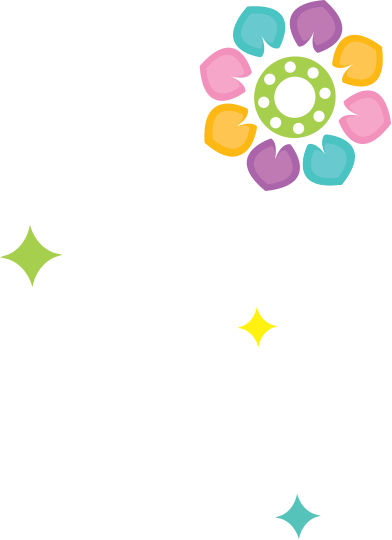Phuket Island Information
Phuket Introduction
Phuket (pronounced 'Poo-Ket') is Thailand’s largest island, approximately the size of Singapore. Nestled in balmy Andaman Sea waters on Thailand’s Indian Ocean coastline, Phuket is approximately 862 kilometers (536 miles) south of Bangkok, and covers an area of approximately 543 square kilometers (134,178 acres) excluding small islets. It is estimated that if all its 39 other small islands are included, Phuket Province will cover an area of approximately 590 square kilometers (145,792 acres). The island’s total length, from north to south, is estimated at 48.7 kilometers (30 miles) and 21.3 kilometers (13 miles) wide.
Phuket's topology is exceptional with 70 percent of its area covered with mountains which stretch from north to south and the remaining 30 percent being plains located in the central and eastern parts of the island. The island does not have any major rivers except for a total of 9 brooks and creeks.
Phuket formerly derives its wealth from tin and rubber, and enjoyed a rich and colorful history. The island was on one of the major trading routes between India and China, and was frequently mentioned in foreign ship logs of Portuguese, French, Dutch and English traders.

History
Commonly referred to as the 'Pearl of the Andaman', Phuket Island has a long history and a rich tradition with many influences from the east as well as from the west.
The name Phuket is derived from the Malay word bukit, meaning hill. The island was previously named Junk Ceylon on European charts, a corruption of the Malay Tanjung Salang meaning Cape Salang. Later it became known as Thalang, after the name of the main town on the island. The island did not come to be known as Phuket until quite late in its history when the administrative centre was moved to a mining town in the centre of the island called Phuket.
Located on trading routes between India and China, Phuket was subjected to foreign influences long before many other parts of Thailand. Ships would anchor in the safe harbors of Phuket and wait for the northeast monsoon winds which would allow them to proceed to India. The interior jungle was inhabited by indigenous tribes until they were displaced in the 19th century by tin miners. The coastal areas were inhabited by Chao Leh - sea-gypsies who made their living through piracy and fishing for pearls. Although threatened by development, Chao Leh villages can still be found along the coast of Phuket and neighboring islands.
Phuket first became part of a Thai state during the thirteenth century when Thai armies from Sukhothai wrestled control of the island from the Sirivijaya Empire based in Sumatra.
Tin & Rubber
Phuket is first mentioned as a major source of tin in the sixteenth century when the island became an important source of revenue for the Thai kingdom at Ayutthaya, as well as an important trading post. It was also during this period that the first Europeans arrived on Phuket.
Due to Phuket's abundant supply of tin and its importance as a trading port, the island's economy continued to prosper. The British secured a tin mining concession and nearly claimed Phuket as part of the British Empire, opting instead for Penang due to its safer harbors. Phuket's streets were lined with handsome buildings constructed in the Sino-Portuguese style by the tin-barons, many of which can still be seen in older quarters of the town.
At the end of the nineteenth century, the island's interior still remained relatively untouched. Much of it was still covered in ancient rainforest. However, at the beginning of the twentieth century, large areas of the island were cleared to make way for rubber plantations.
Tourism began on the island in the 1970s with the first beach bungalows at Patong Beach. During this time Phuket was a haven for backpackers. Phuket's idyllic tropical beaches and clear warm waters attracted travelers from all over the world to the island. This was facilitated by the building of an airport in the mid-1970s.
Today, tourism is by far the island's biggest industry with over 3 million tourists visiting the island annually, making Phuket one of the most popular travel destinations in South-East Asia.
Phuket Top Attractions
1.
Promthep Cape - A promontory stretching into the sea and forming the farthest south end of Phuket. Tall cliffs offer a stunning panoramic vista and an ideal location to watch a stunning sunset.
2.
Phi Phi Island – Located 48 km southeast of Phuket, Ko Phi Phi Don and Ko Phi Phi Leh are encircled by water so clear that you can see almost to the seabed from the surface.
3.
Phang Nga Bay - Ao Phang Nga has a seascape both bizarre and beautiful. Covering some 400 sq kilometers of coastline, the mangrove-lined bay opens out to limestone karst formations of up to 300m in height, jungle-clad and craggily profiled. The bay is thought to have been formed about 12,000 years ago when a dramatic rise in sea level flooded the summits of the local mountain ranges.
4.
Phuket FantaSea – A nighttime fun-for-all entertainment complex that is definitely a “must-see” for visitors to Phuket. Dubbed as the world’s first Thai cultural theme park, Phuket FantaSea offers a highly entertaining and spectacular theatrical show (think 30 elephants!), a grand 4,000 seat buffet restaurant, and a colorful shopping street full of games and carnivals!
5.
Spa - Phuket is host to the burgeoning wellness industry of health spas and a variety of yoga, meditation and detox centers set in natural environments dotted across the island.
6.
Patong Nightlife - Boisterous, flashy and loud, Patong is the center of the hedonistic night life of discotheques and beer bars mixed in with up-scale restaurants and chic designer night-spots. With its wide variety of activities and nightlife, Patong is an ideal place to party and play.
7.
Similan Islands - Known as one of the world’s top 10 spots for awe inspiring above-water and underwater beauty, the 9 islands that make up the Similian Islands are located approximately 100km northwest of Phuket. Massive granite boulders set magnificently against turquoise waters give the islands their distinctive character, and the 30-meter underwater visibility is nothing short of overwhelming.
8.
Phuket Town - Phuket City features an exciting mix of old and new, simple and sophisticated, peaceful and pulsating. The night markets off Ranong Road and along Soi Downtown offer exceptional shopping opportunities.
9.
Beaches - Few islands can boast of such an abundance of sandy beaches and clear waters as Phuket. The winding coastal roads along the west coast of the island offer stunning views and easy access to some of the world's finest beaches, such as Nai Torn Beach, Paradise Beach, Surin Beach, Leam Singh Beach, Nai Han Beach. The monsoon rains of May-October can bring unpredictable swimming conditions, so heed the posted flag warnings.
10.
Wat Chalong is the most visited Buddhist temple on the island and the most beautifully ornamented of Phuket's 29 Buddhist monasteries.The Chalong Temple is associated with three revered monks of Luang Por Chaem, renowned herbal doctors and setters of bones, who helped the people of Phuket put down the Ahngyee -- Chinese Coolie, Rebellion in 1876 during the reign of Rama V.

Getting Around
The single most dangerous thing in Phuket is the traffic. Foreign tourists should exercise extreme caution, especially with motorcycles, if you choose to drive on the island.
Car Rental
The safest way to tour the island at affordable rates.
Tuk Tuk The most visible form of taxi service, small brightly colored Daihatsu and Isuzu pick-ups with covered bench seats in the back. Prices to destinations must be negotiated with the driver.
Song Taew
Small pick-ups and buses with benches along each side of the bed, picking up and dropping off passengers as they go. You need to know the route it goes before getting on.
Motorbike Rental
The cheapest and most common method of transport on the island. Helmet laws are strictly enforced. Motorbike Taxi For short trips across town, these offer a less expensive way to move quickly around most traffic and road conditions.
Climate
Phuket’s climate tends to be moderate all year long, with monsoon rains from May to October, but with generally sunny and tropically warm weather most of the time.
Safety
Phuket is generally very safe. Nevertheless, as with all other places, a foreign tourist tends to be an easy target for criminals, so caution is advised. And remember…
Never walk alone at night along the beach or dark places.
Red flags on the beach indicate strong currents and dangerous undertows and not safe for swimming, especially during the monsoon months of May to October.
Do not take drink/food from strangers!
Do’s and Don’ts
Do’s
1.
Smile! They don’t call this place “the land of smiles” for no reason. Here, a little smile goes a very long way as you will surely discover.
2.
“Wai” A simple, gentle and graceful tradition of greeting by placing your palms together at chest height with your head bent slightly forward. This shows respect to others and denotes a politeness of character.
3.
Learn to speak Thai! Thai people are extremely hospitable by nature and would appreciate a foreign friend trying to utter a few words in Thai, no matter how funny it may sound.
4.
Dress appropriately when visiting temples or revered sites. The more body covering, the better for these sacred areas.
5.
Relax and Have Fun. Sanuk (meaning ‘the essence of fun’ ) is a deep-rooted cultural heritage among the Thai people. Do laugh freely and enjoy your stay, that’s the best way to share in the Thai experience.
Don’ts
1.
The Thai monarchy is highly loved and revered by all Thais. Rude remarks or gestures directed at the monarchy are very offensive to Thai people.
2.
The top of the head is considered the holiest part of the body, so care should be taken when using Western methods of showing affection. Best to stick with the “Wai”.
3.
Lose your temper. It is considered rude and embarrassing to all who encounter anger or irritation as a sign of losing control. Keep a “Cool Heart”, or “Jai Yen Yen”, as the Thai say, in any inflammatory situation.
4.
Worry Too Much – “Mai Pen Rai” is one of the most common expressions in Thai, and it means “It doesn’t matter” or “Don’t mind that” or “It’s nothing really”, which sums up the big picture most effectively.
5.
Don’t forget that you are on a holiday resort island, with its own pace and lifestyle. Things and people naturally move to a more moderate pace, so be patient in trying to get things done while you are here!













 Home
Home




